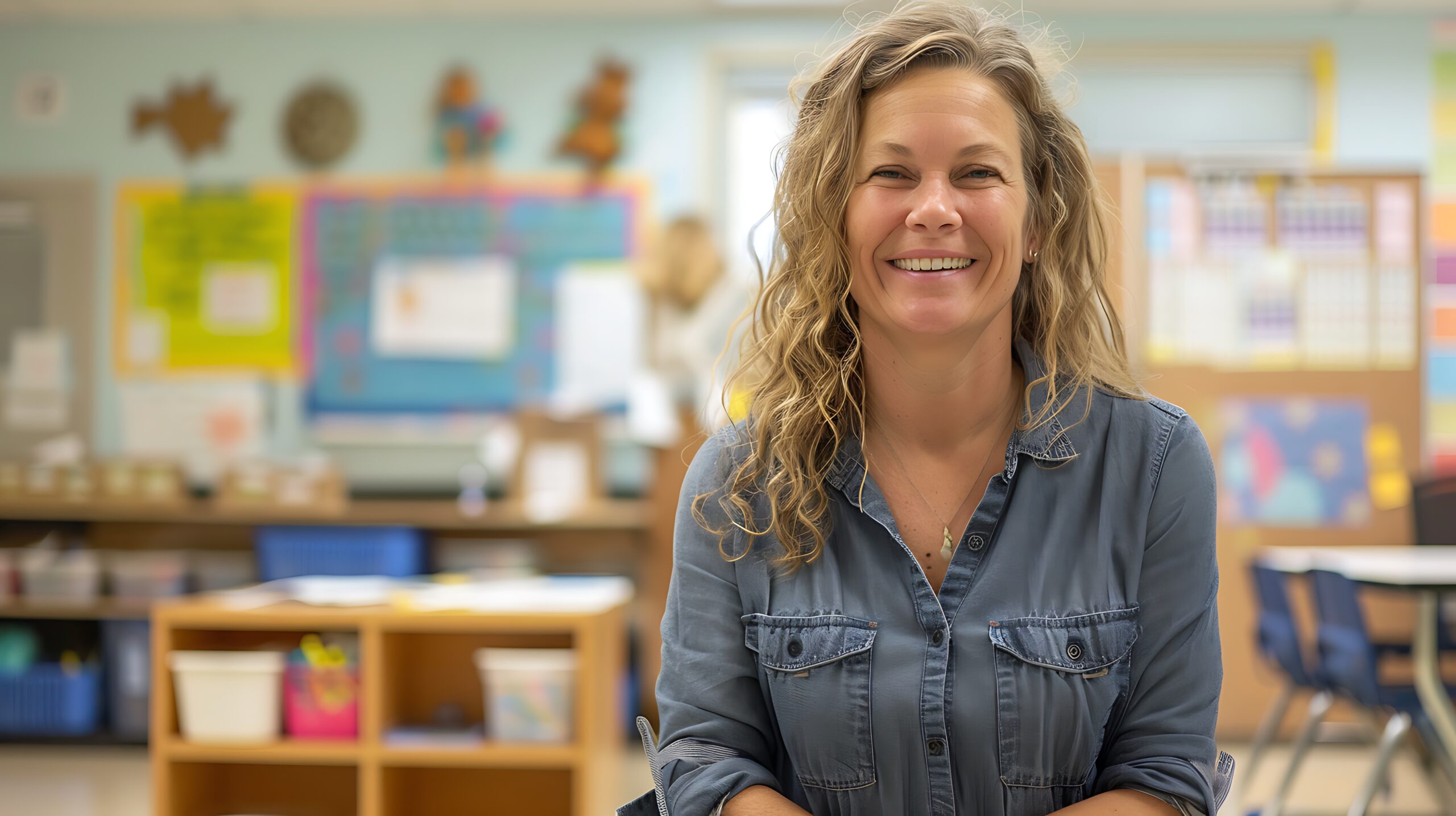Special education teachers are critical to fostering inclusive and supportive educational environments for students with disabilities. These professionals work closely with students, families, and educational teams to ensure that each child receives the support they need to succeed academically and socially. By creating and implementing individualized plans tailored to each student’s abilities, they help students overcome obstacles and thrive.
This blog explores the roles and responsibilities of special education teachers, highlighting their impact on students and the broader educational community.
Who is a Special Education Teacher?
A special education teacher is a professional who works with students with diverse learning needs, including physical, emotional, behavioral, and cognitive disabilities.
These educators are trained to do the following:
- Assess individual student challenges and strengths
- Design tailored instruction plans
- Implement strategies to ensure students receive an equitable education.
Their primary goal is to provide students with disabilities access to the same educational opportunities as their peers while addressing their unique needs.
What do Special Education Teachers Do?
Special education teachers do the following task:
- Support students with various disabilities, working with them to achieve academic, social, and emotional success.
- Design customized education plans, collaborate with school teams, and ensure that each student has access to the general education curriculum.
Let’s elaborate on this.
Role in Supporting Students with Disabilities
Special education teachers play a crucial role in supporting students with disabilities by creating environments where they feel valued and capable. They provide individualized attention, adapt instructional methods, and foster a sense of inclusion. These teachers also help students develop essential skills—such as communication, social interaction, and self-advocacy—that empower them to succeed academically and in life.
Collaboration with Educational Teams in School
Collaboration is at the core of a special education teacher’s responsibilities. They work closely with general education teachers, school counselors, speech therapists, and other professionals to ensure that students receive comprehensive support. By collaborating with multidisciplinary teams, special education teachers can create more effective Individualized Education Plans (IEPs) and provide targeted interventions.
Importance of Special Education Teachers
Special education teachers are integral to the success of an inclusive education system. They ensure that students with disabilities are not left behind by providing specialized instruction and advocating for their needs.
Facilitating Access to General Education Curriculum
One of the primary roles of a special education teacher is to ensure that students with disabilities have access to the general education curriculum. This often involves modifying lesson plans, providing additional support, and utilizing differentiated instruction to accommodate different learning styles and abilities.
Advocacy for Students’ Needs
Special education teachers are powerful advocates for students with disabilities. They ensure that students’ educational rights are upheld and that they receive the services, accommodations, and modifications they need to succeed. This advocacy extends to working with school administrators, parents, and external organizations to secure resources and support for students.
Roles and Responsibilities of SPED Teachers
Primary responsibilities for education teachers is to design and implement individualized education plans for students.
Designing Individualized Education Plans (IEPs)
A core responsibility of special education teachers is the development and implementation of Individualized Education Plans (IEPs). These legally binding documents outline the specific educational goals, accommodations, and services that a student with disabilities will receive.
Customizing Education Plans Based on Student Needs
Every student’s learning needs are unique, and special education teachers customize IEPs to address these specific needs. This may involve identifying academic, social, or behavioral goals, determining necessary accommodations or modifications, and outlining how progress will be measured. Customization is key to ensuring that the educational plan is tailored to the student’s strengths and challenges.
Collaboration with Team Members
IEP development is a collaborative process that involves special education teachers, general education teachers, school administrators, parents, and, in some cases, the student. Special education teachers coordinate these meetings and work to ensure that the IEP reflects the input of all parties, ensuring that the plan is comprehensive and aligned with the student’s best interests.
Implementing Individualized Instruction
Special education teachers not only design IEPs but also implement them through individualized instruction. This requires employing various teaching methods tailored to each student’s learning style and cognitive abilities.
Providing Tailored Teaching Methods
Special education teachers use a variety of instructional techniques, such as differentiated instruction, multi-sensory learning, and hands-on activities, to engage students. They often adapt the curriculum to make it accessible to students who may struggle with traditional teaching methods.
Utilizing Scaffolding, Accommodations, and Modifications
To support student learning, special education teachers utilize scaffolding—breaking down tasks into smaller, more manageable parts—and provide accommodations (such as extra time on tests) and modifications (such as simplifying assignments) to meet each student’s needs. These tools are essential for helping students with disabilities access the curriculum and achieve their educational goals.
Monitoring Learning Progress
Another key responsibility of special education teachers is tracking student progress. This ongoing assessment helps ensure that students are meeting their goals and allows teachers to adjust strategies as needed.
Tracking Student Achievements and Challenges
Special education teachers regularly assess student progress through a combination of formal assessments, observations, and data collection. This information is used to evaluate whether students are achieving the goals outlined in their IEPs and to identify areas where additional support may be needed.
Adjusting Strategies as Needed
When students are not making adequate progress, special education teachers modify their teaching strategies, adjusting instruction methods, or providing additional interventions. Flexibility is crucial in special education, as each student’s learning journey is unique, and methods must be continually adapted to ensure success.
Ensuring Legal Compliance
Special education teachers are responsible for ensuring that their students’ educational services comply with legal requirements, specifically those outlined in the Individuals with Disabilities Education Act (IDEA).
Adhering to IDEA Regulations
IDEA sets the legal framework for special education services in the United States. Special education teachers must ensure that students with disabilities are provided with a Free Appropriate Public Education (FAPE) in the least restrictive environment (LRE) possible. This includes following procedures for developing IEPs, providing services, and ensuring student rights are protected.
Timely Completion of Required Paperwork
The legal responsibilities of a special education teacher also involve completing and maintaining thorough documentation. This includes keeping detailed records of IEP meetings, progress reports, assessments, and any changes to a student’s education plan. These records are critical for ensuring compliance with IDEA and for advocating for students’ needs.
Daily Duties of Special Education Teachers
In addition to long-term responsibilities like developing IEPs and monitoring progress, special education teachers engage in numerous daily tasks that support students and maintain communication with families.
Communication with Families
Effective communication with families is essential in special education, as parents and guardians play a crucial role in supporting their child’s education.
Sharing IEP Plans and Updates
Special education teachers regularly meet with parents to discuss their child’s progress, share updates on IEP goals, and address any concerns. This open line of communication helps ensure that families are involved in their child’s education and can provide support at home.
Building Strong Home-School Partnerships
In addition to formal meetings, special education teachers work to build strong relationships with families through ongoing communication via phone calls, emails, or school newsletters. These partnerships are vital for fostering consistency between school and home environments, which is essential for student success.
Instructional Planning
Planning and delivering instruction that meets the needs of diverse learners is a key part of the special education teacher’s role.
Developing Lesson Plans that Meet Diverse Needs
Special education teachers create lesson plans that accommodate a wide range of learning abilities. These plans are often customized to address the specific academic and developmental goals of their students.
Incorporating Various Teaching Techniques
To engage students with different learning styles, special education teachers incorporate a variety of teaching techniques, such as hands-on activities, group work, and visual aids. These strategies help students stay engaged and motivated.
Student Observations
Observing students in both academic and social settings is crucial for understanding their needs and adjusting instruction accordingly.
Conducting Frequent Assessments
Special education teachers conduct regular assessments to gauge student progress, understand areas of difficulty, and make necessary adjustments to their teaching strategies.
Gathering Data to Inform Instruction
By gathering data from assessments, classroom observations, and student work, special education teachers can inform their instruction and provide targeted interventions to support student success.
Supervising Paraprofessionals
In many classrooms, special education teachers work with paraprofessionals, instructional aides, and teacher assistants who support student learning.
Guiding Instructional Aides and Teacher Assistants
Special education teachers are responsible for supervising paraprofessionals and ensuring they understand their roles in supporting students. They guide these individuals in providing academic support, implementing accommodations, and managing behavior.
Coordinating Support Services
Special education teachers also coordinate support services provided by occupational therapists, speech therapists, and other specialists. This coordination ensures that students receive comprehensive support in all areas of their development.
Skills and Qualities of Special Education Teachers
Compassion and Empathy
Special education teachers must be compassionate and empathetic, as they work with students facing significant challenges. They need to understand their students’ difficulties and provide emotional support in addition to academic instruction.
Understanding and Addressing Student Challenges
Understanding the unique challenges that students with disabilities face is essential for a special education teacher. They must address these challenges with patience and empathy to create a positive learning environment.
Organizational Skills
Managing multiple students’ needs, IEPs, and legal paperwork requires strong organizational skills.
Managing Multiple IEPs and Administrative Tasks
Special education teachers must juggle multiple IEPs, maintain accurate records, and stay organized to ensure that they meet all administrative and legal requirements.
Advocacy and Creativity
Special education teachers must be advocates for their students, finding creative solutions to meet their individual needs.
Finding Innovative Solutions to Meet Student Needs
Whether it’s adapting lesson plans or finding new ways to engage a student, special education teachers must be creative in their approach to solving problems and addressing learning challenges.
Excellent Communication
Communication is key to success in special education, as teachers must collaborate with various stakeholders to ensure students receive the support they need.
Collaborating with Teachers, Parents, and Specialists
Special education teachers must communicate effectively with general education teachers, specialists, and families to ensure that all team members are informed and working toward common goals.
Students Served by Special Education Teachers
Eligibility for IEPs
Students who qualify for special education services must meet specific criteria outlined under IDEA.
Criteria under the Individuals with Disabilities Education Act (IDEA)
IDEA outlines specific eligibility criteria for students to receive special education services, which are based on the nature and severity of their disability.
Age Requirements (3 and Up)
Special education services are available for students from age 3 through 21. Early intervention services are also available for younger children, but formal IEPs are typically developed once a child reaches the age of three.
Types of Disabilities Covered
Special education teachers work with students with a variety of disabilities.
Specific Learning Disabilities
These include dyslexia, dyscalculia, and other conditions that affect a student’s ability to learn.
Autism Spectrum Disorder
Special education teachers support students with autism, helping them develop communication and social skills while addressing academic challenges.
Visual and Hearing Impairments
Teachers provide accommodations for students with visual or hearing impairments, ensuring they can access the curriculum.
Intellectual Disabilities
Special education teachers help students with intellectual disabilities achieve academic goals through modified instruction.
Traumatic Brain Injury
Students who have experienced brain injuries require specialized instruction and support to rebuild skills and progress academically.
Emotional and Behavioral Disabilities
Teachers address emotional and behavioral challenges that impact a student’s ability to learn in a traditional setting.
Orthopedic Impairments
Special education teachers work with students who have physical disabilities that affect mobility and motor skills.
Multiple Disabilities
Some students have more than one disability, and special education teachers must coordinate services to meet these complex needs.
Other Health Impairments
These include conditions like ADHD and other health issues that impact a student’s ability to perform academically.
The IEP Process
The IEP process is a collaborative effort that involves teachers, parents, and specialists working together to develop an individualized plan for each student.
Development and Implementation
The development of an IEP involves setting specific educational goals for the student and outlining the services and accommodations they will receive. Special education teachers are responsible for implementing these plans and ensuring that the student’s needs are met throughout the school year.
Tailoring Education Plans to Individual Needs
Teachers tailor education plans by continuously assessing each student’s progress and adapting strategies as necessary. This flexibility is essential to ensuring that the plan remains relevant and effective.
Team Composition
IEP development is a team effort. Special education teachers collaborate with general educators, therapists, administrators, and parents to create a well-rounded, effective plan. This collaborative approach ensures that all aspects of a student’s education are considered.
Involvement of Parents, Students, Teachers, Specialists, and Administrators
Collaboration among all stakeholders is crucial in the development and implementation of Individualized Education Plans (IEPs). Parents bring valuable insights about their child’s needs and strengths, while students offer perspectives on their own learning experiences. General education teachers contribute their understanding of curriculum and classroom dynamics, while specialists—such as speech therapists or occupational therapists—provide targeted support strategies. Administrators play a key role in ensuring that resources are available and that policies are adhered to, fostering a collaborative environment that supports student success.
Review and Evaluation
Regular review and evaluation processes are essential for maintaining the effectiveness of IEPs and ensuring that students continue to receive appropriate services.
Annual Reviews
IEPs are reviewed at least once a year to assess student progress and determine whether the current plan remains suitable. During these reviews, teams discuss the student’s achievements, challenges, and any necessary adjustments to goals or services.
Triennial Reevaluations to Assess Continued Need for Services
Every three years, a comprehensive reevaluation is conducted to determine whether a student still qualifies for special education services. This process includes formal assessments, input from teachers and specialists, and discussions with parents, ensuring that educational strategies align with the student’s evolving needs.
Benefits of Becoming a Special Education Teacher
Personal Fulfillment
One of the most rewarding aspects of being a special education teacher is witnessing the growth and success of students.
Witnessing Student Growth and Success
Teachers often have the privilege of seeing their students overcome challenges and achieve their goals, fostering a deep sense of satisfaction and fulfillment. The personal connections formed can be incredibly meaningful, as teachers help students develop both academically and socially.
Professional Impact
Special education teachers play a vital role in equipping students with essential skills and advocating for their needs.
Equipping Students with Necessary Skills and Advocacy
By providing individualized instruction and support, special education teachers empower students to develop the skills they need for academic success and daily life. Additionally, they advocate for their students within the school system, ensuring that their rights are upheld and that they receive the services they need.
Positive Outcomes
The impact of effective special education teaching extends beyond the classroom.
Enhancing Students’ Academic, Social, and Emotional Well-Being
Through tailored instruction and support, special education teachers help students achieve not just academic success, but also improved social interactions and emotional resilience. This holistic approach fosters well-rounded development and prepares students for future challenges.
Demand for Special Education Teachers
Current Shortages
There is a growing demand for qualified special education teachers.
Impact of Emergency Teaching Licenses
To address these shortages, many states have implemented emergency teaching licenses, allowing individuals without formal teaching credentials to step into special education roles. While this can help fill immediate gaps, it raises concerns about the quality of education students receive.
Challenges in Hiring SPED Teachers
Hiring qualified special education teachers presents several challenges.
Lack of Fully Qualified Candidates
Many districts face difficulties in finding candidates who meet the rigorous qualifications necessary for special education roles. This shortage often leads to increased workloads for existing teachers and can impact student support.
Implications for Student Support and Education Quality
The lack of qualified special education teachers can have significant implications for student support and overall education quality, potentially hindering students’ academic progress and well-being.
Conclusion
Special education teachers are essential advocates and educators who provide individualized support to students with disabilities, ensuring they receive equitable education opportunities. Their roles extend beyond instruction, encompassing the design and implementation of tailored education plans, collaboration with families and educational teams, and legal compliance. By fostering academic, social, and emotional growth, special education teachers make a profound impact on students’ lives. Despite challenges like staffing shortages, their work is deeply fulfilling and plays a crucial role in shaping a more inclusive and supportive educational environment for all students.
If you encounter challenges in your educational journey, don’t face them alone. Learning about the complexities of college and university rules can be daunting, and it’s crucial to have someone knowledgeable on your side. Consider reaching out to K Altman Law, a firm specializing in educational law. Our experienced attorneys and staff are here to help you interpret policies and advocate for your rights, ensuring you can focus on your education and overcome any obstacles in your path.
At K Altman Law, we understand the complexities of special education law can be challenging. If you have questions or need assistance with special education evaluations, we’re here to help. Contact us today for a consultation, and let our experienced team guide you through the process to ensure your child receives the education and support they deserve.





